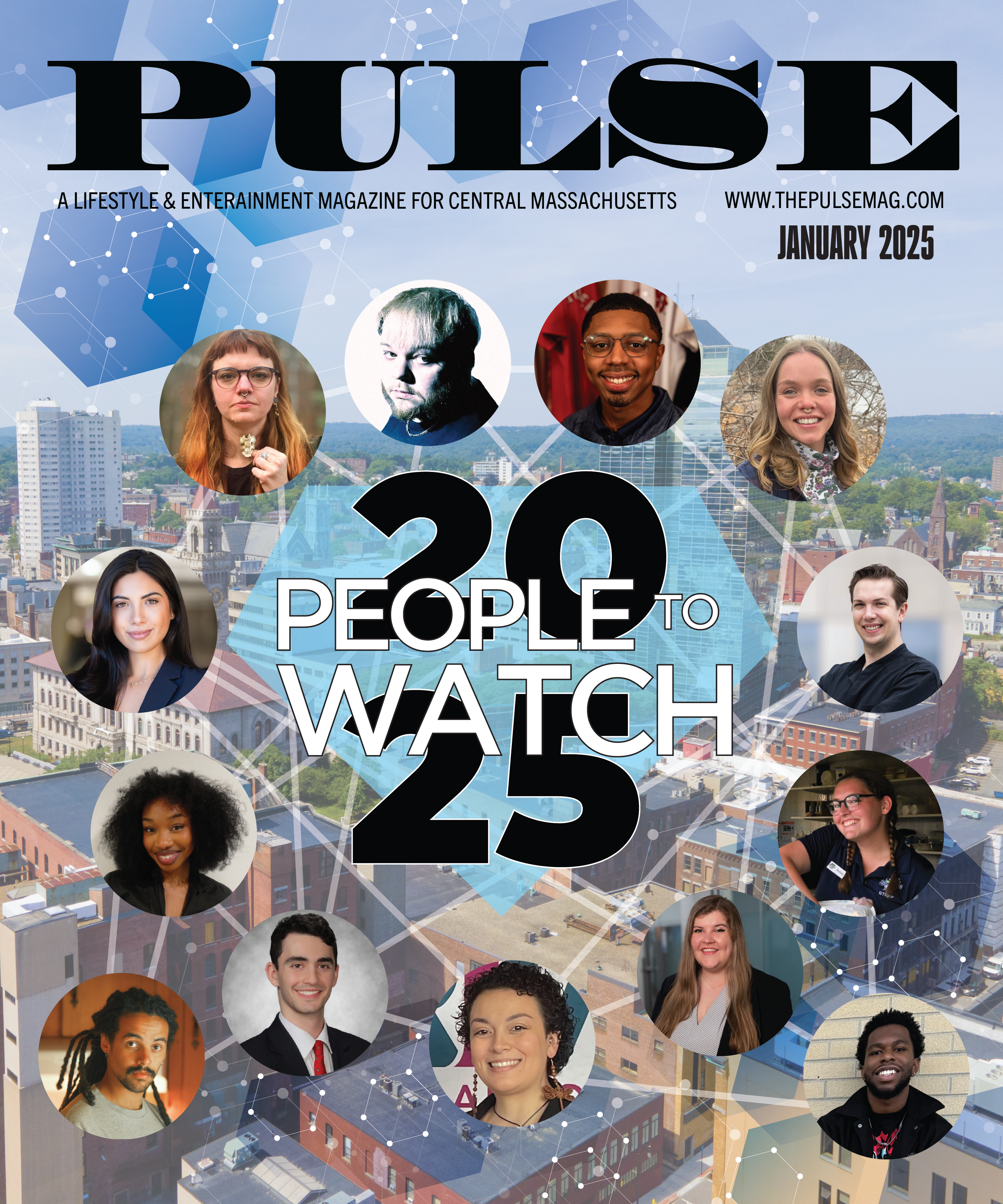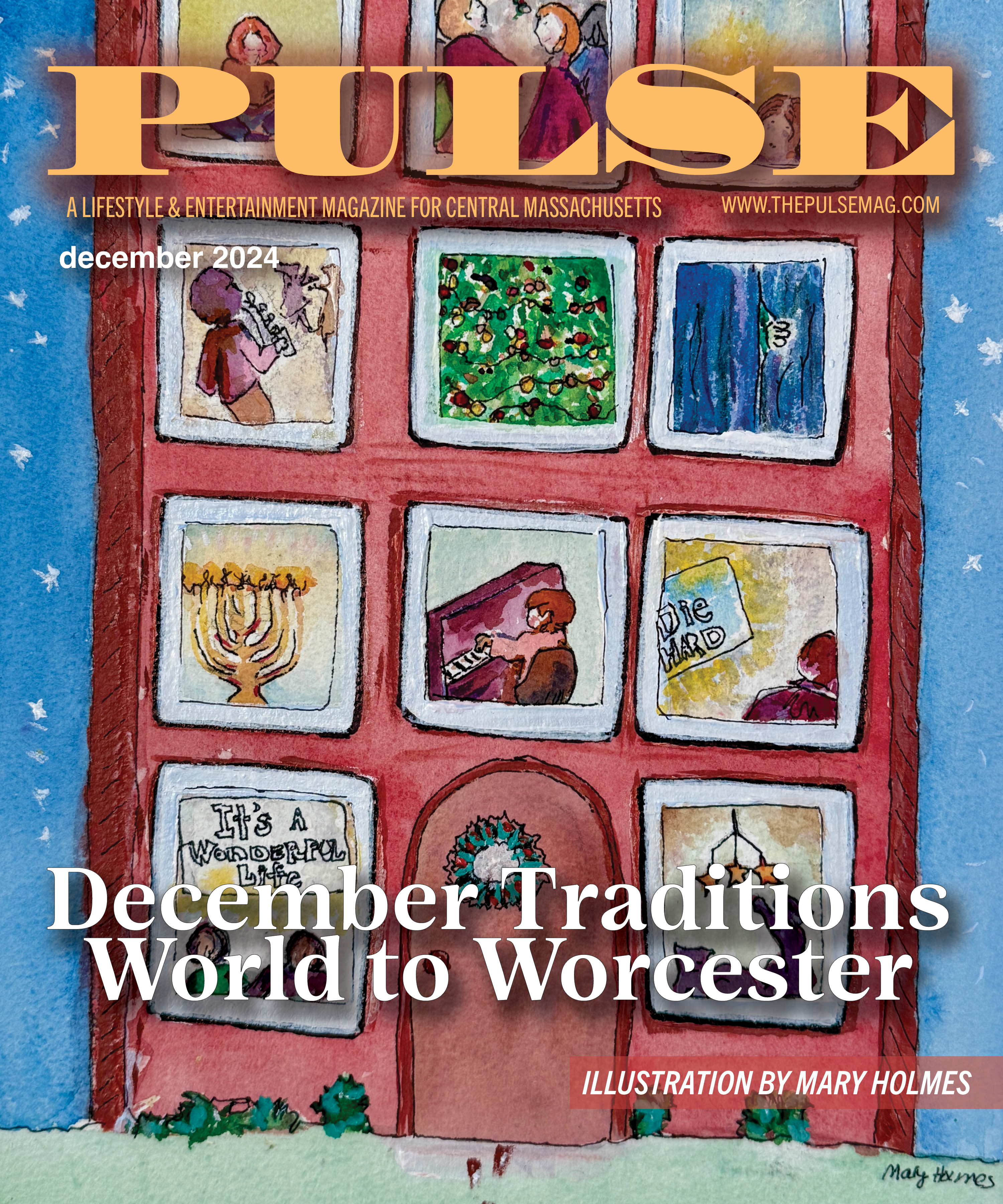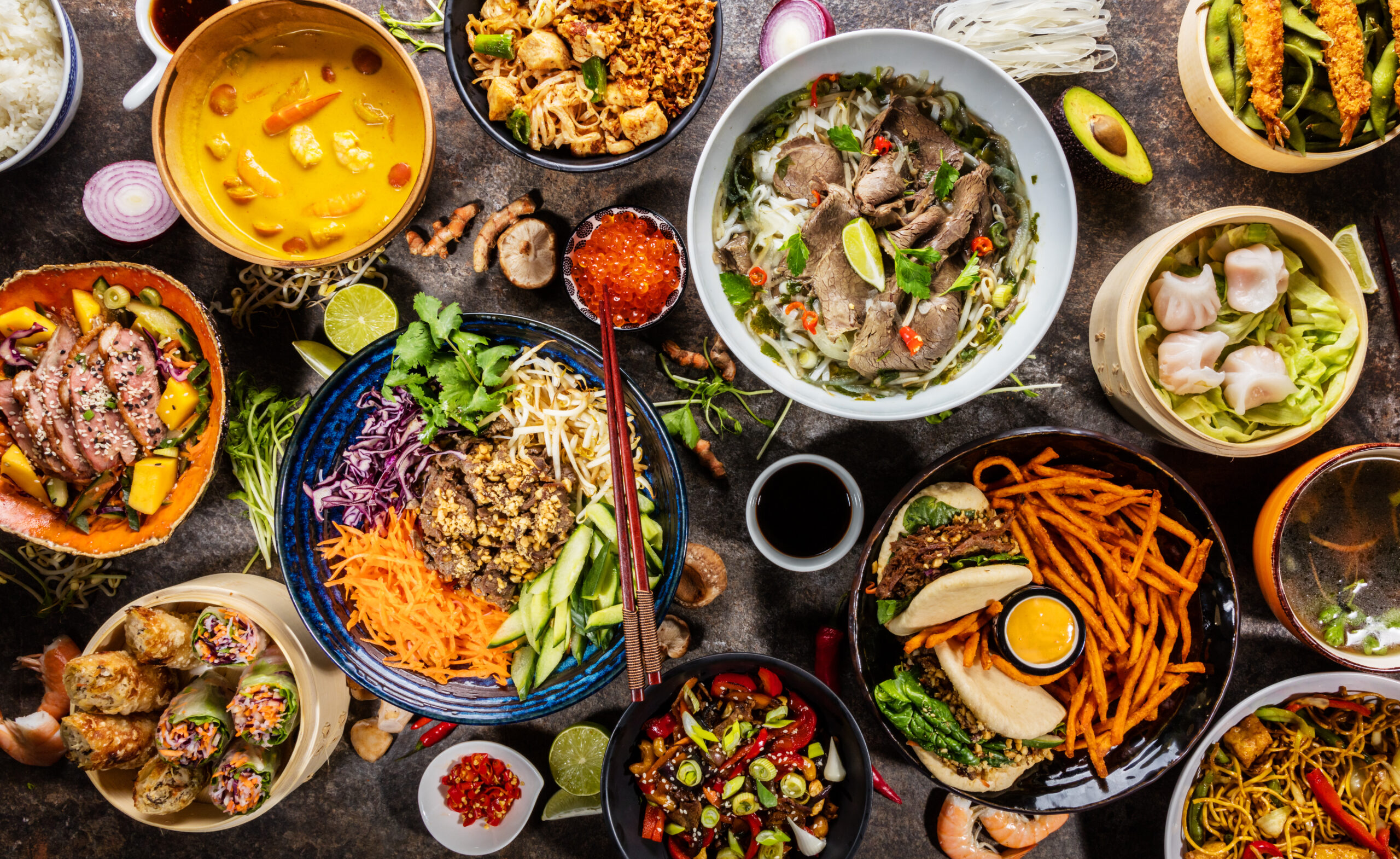
December really is the most wonderful time of the year. Although, in the United States, this month is often synonymous with the Christmas holiday, there are a variety of other traditions celebrated throughout the month. While the most well-known of these non-Christian celebrations are Hanukkah and Kwanzaa, there’s also Bodhi Day, Pancha Ganapat and Yule. Never heard of them? Read on to get your fill of holiday cheer.
Christmas
Date in 2014: Dec. 25
Greeting: “Merry Christmas.”
 While Christmas has become somewhat of a secular and hugely commercialized holiday focused on Santa Claus (the “official” website of Christmas is all about gift-giving and shopping), it is ultimately rooted in Christianity.
While Christmas has become somewhat of a secular and hugely commercialized holiday focused on Santa Claus (the “official” website of Christmas is all about gift-giving and shopping), it is ultimately rooted in Christianity.
For centuries, the two most important Christian holidays were Easter, Jesus’ resurrection, and Epiphany, the arrival of the Magi to the nativity scene on Jan.6 (Russian and Greek Orthodox still celebrate Christmas on this day). In the 4th century, church officials began celebrating the birth of Christ on Dec. 25. Although the bible does not mention a date of birth, officials chose the 25th because it coincided with the Pagan celebration Yule (see sidebar). Over the next few centuries, Christmas spread across the Western world. Because the holiday was considered a British custom and most of the traditions mirrored that of Yule (decorating trees, caroling and the Yule log), it fell out of favor with Puritans and was even banned in America from 1659-81.
It wasn’t until the 1800s, and with the help of Charles Dickens’ A Christmas Carol, that Americans began embracing the family value of Christmas ~ both inside and outside the church. Christmas became a U.S. federal holiday in 1870. In 1823, the mythical figure of Santa Claus took center stage in Clement Clarke Moore’s poem, which we now know as The Night Before Christmas. This poem and the iconic image by political cartoonist Thomas Nast in 1881 helped paint a picture of jolly St. Nicholas. By the mid-19th century, Christmas shopping advertising and department store Santas hit America. The legend continued to grow, and when Santa’s existence was confirmed in the 1897 edition of The New York Sun (“Yes, Virginia, there is a Santa Claus”), his legacy was solidified.
To this day, children await the arrival of Santa Claus on his sleigh, led by Rudolph and the other reindeer, on Christmas Eve (Dec. 24) and open gifts left under the Christmas tree or in stockings hung by the fireplace Christmas morning. Celebrations take place both Christmas Eve and Day, often involving church services and family feasts.
 Celebrate Christmas
Celebrate Christmas
Holidays at the WAM Beginning Nov. 30 Worcester Art Museum, 55 Salisbury St., Worcester. Revel in the Worcester Art Museum’s holiday festivities with weekly performances in the Renaissance Court and decorations throughout the museum.
City of Worcester Festival of Lights Dec. 5 City Hall Grand Stairway, 455 Main St., Worcester. This non-holiday specific event marks the official opening of the public skating rink and includes youth choral performances (includes Christmas, Hanukkah and Kwanzaa songs) ~ all leading up to the lighting of the city’s tree.
Sutton Chain of Lights 10 a.m.-4 p.m., Dec. 6 Vaillancourt Folk Art, 9 Main St., Suite 1H, Sutton. Enjoy a “quintessential small town Christmas celebration” packed with old-fashioned New England experiences.
Christmas by Candlelight 4-9 p.m., weekends, Dec. 5-21 Old Sturbridge Village, 1 Old Sturbridge Village Road, Sturbridge. Discover the foundations of today’s Christmas traditions with costumed interpreters.
The Worcester Chorus in Handel’s Messiah 8-10 p.m., Dec. 6 Mechanics Hall, 321 Main St., Worcester. An annual tradition for more than a century, Music Worcester will present Handel’s Messiah.
A Christmas Carol Dec. 19-28 Hanover Theatre for the Performing Arts; 2 Southbridge St., Worcester. See this classic tale performed live.
Hanukkah
Dates in 2014: Dec. 16-24
Greeting: “Hanukkah Sameach”
 Hanukkah is an eight-day Jewish festival honoring light, purity and spirituality. Hanukkah begins on the eve of the 25th of the Jewish month of Kislev (usually falling in November or December each year).
Hanukkah is an eight-day Jewish festival honoring light, purity and spirituality. Hanukkah begins on the eve of the 25th of the Jewish month of Kislev (usually falling in November or December each year).
Hanukkah, although not one of the Jewish high holy days, is a symbolic celebration of two different miracles ~ the first an event that occurred more than 21 centuries ago, when a small army of Jews rebelled against the Greek army that occupied the Holy Land and tried to force a Hellenistic lifestyle on the people of Israel. Against all odds, the small army, led by Judah “The Hammer” Maccabee, reclaimed the Holy Temple in Jerusalem. The second miracle came upon rededicating the Temple. The army only found enough pure olive oil to light the menorah (Hebrew for candelabrum) for a single day.
 Miraculously, the oil burned for eight days and nights, the time it took for them to find more. Due to the nature of the miracle, Hanukkah customs include eating foods fried in oil ~ latkes (potato pancakes) and sufganiot (doughnuts) are the most popular. On each of the eight nights, a candle on the nine-branched menorah (chanukiah) is lit. The shamash (the “helper” candle) is lit and used to light the others (one the first night, two on the second night, etc.). It is also tradition to give children gifts each night of Hanukkah. These began as small gifts of money, or gelt, but due to commercialization of the holiday, particularly in the U.S. due to its proximity to Christmas, the gifts have gotten bigger. The holiday includes festive music and another Hanukkah ritual object: the dreidel, a four-sided spinning top used in a traditional game.
Miraculously, the oil burned for eight days and nights, the time it took for them to find more. Due to the nature of the miracle, Hanukkah customs include eating foods fried in oil ~ latkes (potato pancakes) and sufganiot (doughnuts) are the most popular. On each of the eight nights, a candle on the nine-branched menorah (chanukiah) is lit. The shamash (the “helper” candle) is lit and used to light the others (one the first night, two on the second night, etc.). It is also tradition to give children gifts each night of Hanukkah. These began as small gifts of money, or gelt, but due to commercialization of the holiday, particularly in the U.S. due to its proximity to Christmas, the gifts have gotten bigger. The holiday includes festive music and another Hanukkah ritual object: the dreidel, a four-sided spinning top used in a traditional game.
Celebrate Hanukkah
Shabbat & Hanukkah Party Dec. 19 Jewish Federation of Central Massachusetts, 633 Salisbury St., Worcester. The young adult division (ages 22-45) of the Jewish Federation of Central Massachusetts (JFCM) is hosting a party combining its monthly Shabbat dinner and Hanukkah celebration. The event features a latke contest and dreidel games (proceeds benefit Rachel’s Table of Worcester). To attend or for more information, contact Mindy Hall at mhall@jfcm.org or (508) 756-1543.
Pre-Hanukkah Celebration ~ JFCM Night at the Worcester Sharks 3 p.m., Dec. 14 DCU Center, 50 Foster St., Worcester. Join JFCM for a pre-Hanukkah celebration at the Sharks game. Tickets are $13.
Kwanzaa
Dates in 2014: Dec. 26- Jan. 1
Greeting: “Joyous Kwanzaa”
 Kwanzaa, derived from the Swahili phrase “matunda ya kwanza,” which means “first fruits,” was first introduced as a holiday in 1966. Dr. Maulana Karenga, a professor and chairman of black studies at California State University, Long Beach, was looking for a way to bring the African-American community together after the race riots in Los Angeles in 1965. Kwanzaa is a combination of a variety of harvest celebrations and gives African-American families an opportunity to unite and celebrate their culture (because it is a secular holiday, it includes all African people). Today, many families celebrate Kwanzaa in addition, rather than as a replacement, to Christmas and Hanukkah. Kwanzaa, which is celebrated from Dec. 26-Jan.1, contains traditional elements of celebration that families usually observe on their own. Across the seven days, celebrants engage in activities like singing, dancing, African drumming, storytelling, poetry reading and a traditional African feast (Karamu) on the sixth day (Dec. 31). On each of the seven nights, the family gathers to light one of the candles on the kinara (candleholder) ~ which, according to the official Kwanzaa website, contains one black candle, three red and three green candles. The official colors of Kwanzaa are black (for the people), red (for their struggle) and green (for the future and the hope that comes from the struggle).
Kwanzaa, derived from the Swahili phrase “matunda ya kwanza,” which means “first fruits,” was first introduced as a holiday in 1966. Dr. Maulana Karenga, a professor and chairman of black studies at California State University, Long Beach, was looking for a way to bring the African-American community together after the race riots in Los Angeles in 1965. Kwanzaa is a combination of a variety of harvest celebrations and gives African-American families an opportunity to unite and celebrate their culture (because it is a secular holiday, it includes all African people). Today, many families celebrate Kwanzaa in addition, rather than as a replacement, to Christmas and Hanukkah. Kwanzaa, which is celebrated from Dec. 26-Jan.1, contains traditional elements of celebration that families usually observe on their own. Across the seven days, celebrants engage in activities like singing, dancing, African drumming, storytelling, poetry reading and a traditional African feast (Karamu) on the sixth day (Dec. 31). On each of the seven nights, the family gathers to light one of the candles on the kinara (candleholder) ~ which, according to the official Kwanzaa website, contains one black candle, three red and three green candles. The official colors of Kwanzaa are black (for the people), red (for their struggle) and green (for the future and the hope that comes from the struggle).
 After the lighting of the kinara, there is a discussion of that day’s principle. The seven principles of Kwanzaa, called the Nguzo Saba, were created by Dr. Karenga to highlight ideals of African culture, as one of the points of Kwanzaa is to preserve the African culture. The seven are unity; self-determination; collective work and responsibility; cooperative economics; purpose; creativity; and faith. Families are encouraged to decorate their houses with colorful pieces of art, but the Kwanzaa celebration focuses on a single spot in a room. Once the spot is chosen, it is adorned with the seven symbols of Kwanzaa: The area is covered in a mkeka (a decorative mat), the kinara with the mishumaa saba (seven candles), mazao (crops), kikimbe cha umoja (unity cup for libations) and zawadi (gifts). The zawadi are opened on the last day of Kwanzaa.
After the lighting of the kinara, there is a discussion of that day’s principle. The seven principles of Kwanzaa, called the Nguzo Saba, were created by Dr. Karenga to highlight ideals of African culture, as one of the points of Kwanzaa is to preserve the African culture. The seven are unity; self-determination; collective work and responsibility; cooperative economics; purpose; creativity; and faith. Families are encouraged to decorate their houses with colorful pieces of art, but the Kwanzaa celebration focuses on a single spot in a room. Once the spot is chosen, it is adorned with the seven symbols of Kwanzaa: The area is covered in a mkeka (a decorative mat), the kinara with the mishumaa saba (seven candles), mazao (crops), kikimbe cha umoja (unity cup for libations) and zawadi (gifts). The zawadi are opened on the last day of Kwanzaa.
Celebrate Kwanzaa
Community Kwanzaa 2-6 p.m., Dec. 21 National Black Doll Museum of History & Culture; 288 N. Main St., Mansfield. A presentation and reenactment of the seventh night of Kwanzaa, which includes the ceremony for the Karmau. With songs, storytelling and food, this event comes alive with audience participation and culminates with each participant being presented with a zawadi.
Bodhi Day
Bodhi Day is celebrated Dec. 8, commemorating the day in which the Buddha found enlightenment. At age 29, Siddhartha Gautama, who would later become the Buddha, left home in search of the meaning of life. After six years of not finding the peace he needed, Siddhartha decided to sit under a Bodhi tree until he found his answers. On the morning of the eighth day, he came to the realizations that have become principles of modern Buddhism. Although Bodhi Day is often celebrated through remembrance and meditation, it can be celebrated differently in each culture. Generally, colored lights are strung ~ the colors represent the many pathways to enlightenment ~ and turned on every night for 30 days. A candle is also lit for 30 days to symbolize enlightenment. In some homes, you will see ficus trees (Bodhi trees) strung with lights; beads (the strand representing unity); and three shiny ornaments (they represent the Three Jewels ~ the Buddha, the Dharma and the Sangha). A traditional meal of rice with milk is also served, as are cookies shaped like Bodhi tree leaves (hearts).
Pancha Ganapati
Pancha Ganapati is a five-day Hindu festival celebrated from Dec. 21-25, dedicated to family giving and new beginnings. The holiday honors Lord Ganesha, patron of arts and guardian of culture, and was created in 1985 as a Hindu alternative to December holidays. Each of the five days is assigned a special spiritual discipline (family, friends, associates, culture and religion) and a different color (yellow, blue, red, green and orange). A shrine is created in the main living room of the home and decorated; this includes a statue (or portrait) of Lord Panacha Ganapati, usually draped in pine boughs or banana leaves. Each morning, the children dress the statue in a different color and place a gift in front of him, which are all opened on the fifth day. Lights, tinsel and colorful hanging ornaments may also be added to the shrine. Each day, a tray of sweets, fruits and incense is offered to Lord Ganapati, often by the children, and chants and songs are sung in his name. Afterward, the sweets are shared by all.
Yule
Yule is a pagan festival observed during the Winter Solstice. The solstice, which occurs on Dec. 21, was historically celebrated by the Norse to mark of the rebirth of the sun. They would light a Yule log, which would sometimes burn for 12 days, taking the revelry into January. This time was reserved for feasting and customs like caroling (or “wassailing”), decorating evergreen trees and gift-giving.
In ancient times, the Winter Solstice was also celebrated in other parts of the world, including Rome, with traditions like Saturnalia (a festival in honor of Saturn, the god of agriculture, which began a week before the solstice and often lasted a month), Juvenalia (honoring the children of Rome), and the elite holiday celebrating the sacred birth of the infant god of unconquerable sun, Mithra (Dec. 25). Many of the traditions were later absolved into the secular holiday of Christmas.
By Kim Dunbar






